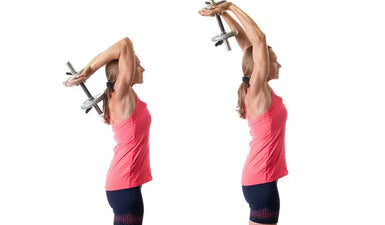Trampoline exercises, often referred to as rebounding, are emerging as a highly effective, joint-friendly, and low-impact fitness solution. These versatile workouts, suitable for all ages and fitness levels, offer a fun way to build endurance, strengthen muscles, and improve overall well-being. With minimal time commitment, typically around 20 minutes, individuals can experience significant health benefits.
Key Takeaways
- Low-Impact Benefits: Trampoline exercises are gentle on joints, making them ideal for recovery and individuals with joint sensitivities.
- Full-Body Workout: Rebounding engages multiple muscle groups, improving strength, balance, and coordination.
- Cardiovascular Health: Bouncing elevates heart rate, contributing to improved blood flow and cardiovascular fitness.
- Accessibility: Suitable for all ages and fitness levels, requiring minimal space and time.
The Science Behind the Bounce
Research indicates that bouncing on a trampoline can significantly improve balance and coordination. The rhythmic motion also enhances blood flow throughout the body. Celebrity trainer Lauren Kleban highlights that rebounding is an inclusive exercise, achievable by anyone regardless of age or fitness level, and can be highly effective in just 20 minutes.
Choosing the Right Rebounder
When selecting an exercise trampoline, or rebounder, it's crucial to opt for equipment specifically designed for fitness rather than a toy. Experts recommend looking for bungee-based systems, which provide a smoother, quieter bounce that is gentler on the joints compared to traditional metal springs. Key features to consider include stability, with sturdy frames and non-slip surfaces being paramount. For beginners or those concerned about balance, handlebars can offer additional support. Size also plays a role, with 36 to 48-inch diameters being common, offering varying degrees of movement space. Durability is ensured by heavy-duty steel frames and weather-resistant materials for outdoor use.
Benefits for Joint Health and Beyond
One of the most significant advantages of trampoline workouts is their low-impact nature. The mat absorbs much of the shock, reducing stress on knees, ankles, and hips. This makes rebounding an excellent option for individuals recovering from injuries or those seeking to protect their joints. Beyond joint care, rebounding also stimulates the lymphatic system, aiding in toxin removal, boosting the immune system, and reducing inflammation. It's a comprehensive workout that strengthens muscles, improves cardiovascular health, and enhances overall physical function.
Making Rebounding Work for You
Whether the goal is cardio and weight loss, low-impact recovery, or strength and balance training, there's a rebounder suited for the task. Responsive bounces are ideal for high-intensity intervals, while bungee-based models are perfect for joint-friendly routines. For those looking to incorporate more advanced movements, wider surfaces and handlebars can provide the necessary support and space. The versatility of trampoline exercises allows individuals to tailor their workouts to their specific fitness goals and preferences, making it a sustainable and enjoyable addition to any fitness regimen.
Sources
- The 10 Best Exercise Trampolines, Tested by Editors, Health.com.
- 7 Best Fitness Trampolines for Exercise 2025, New York Magazine.
- The 8 Best Rebounders and Trampolines for Home Workouts, Shape Magazine.
- 5 Best Rebounder Trampolines in 2025, SELF Magazine.
- 11 Best Exercise Trampolines to Level Up Your Workouts in 2022, Prevention.

























0 comments